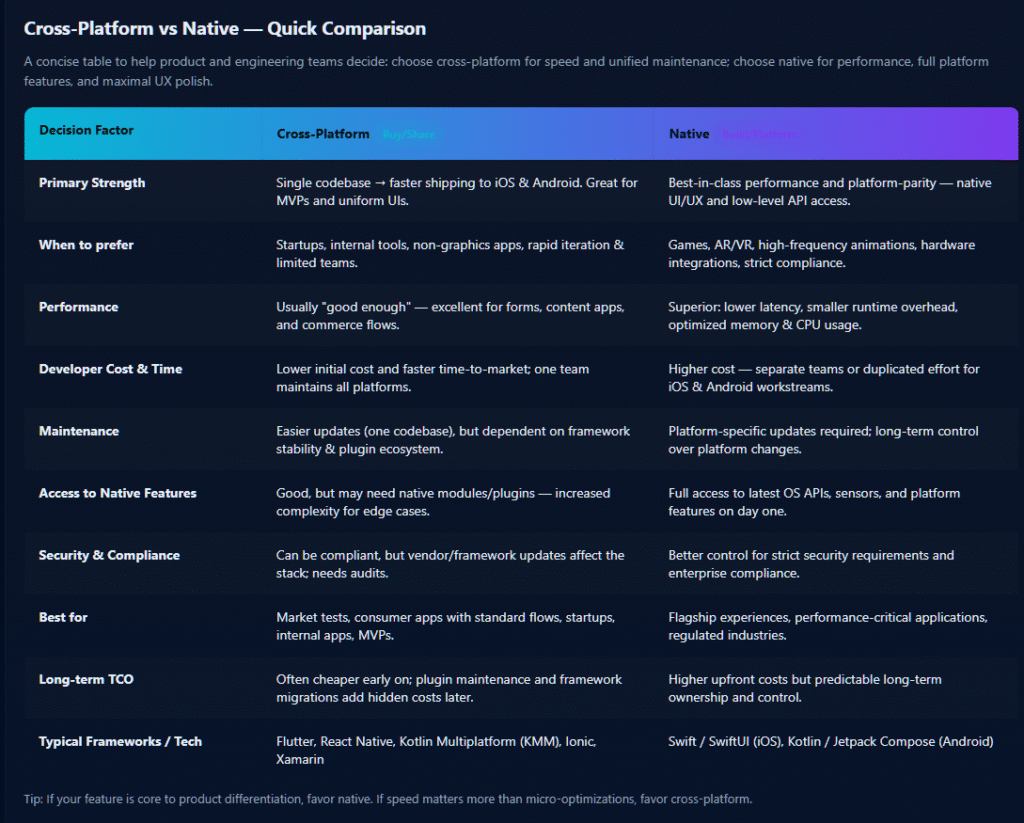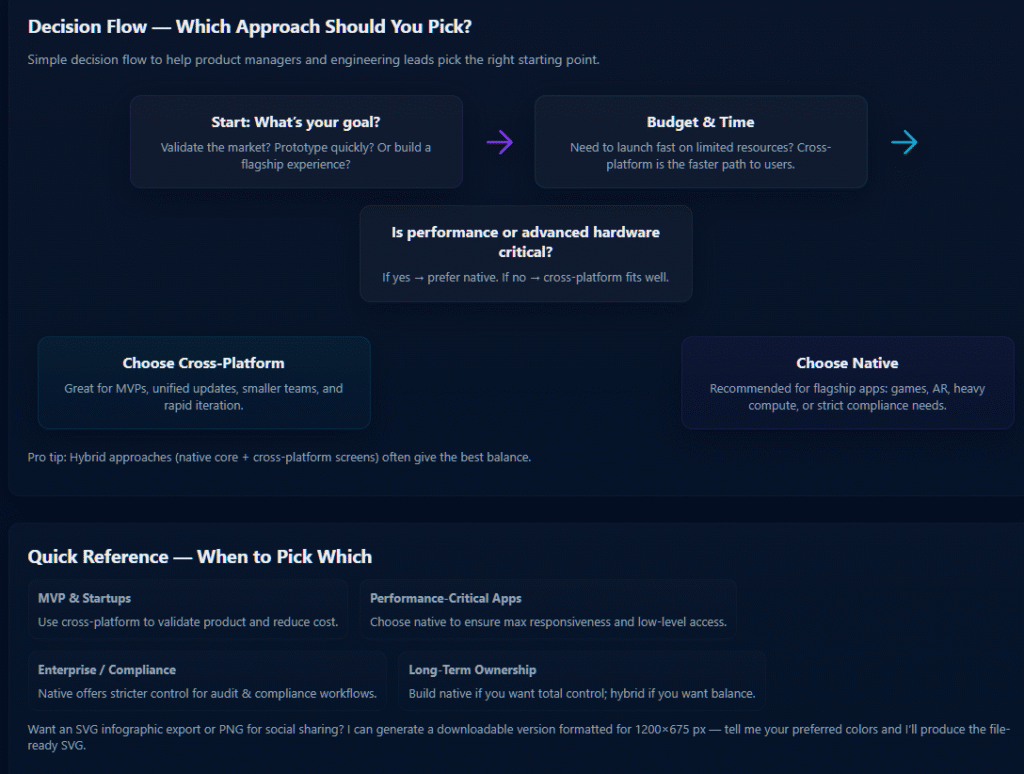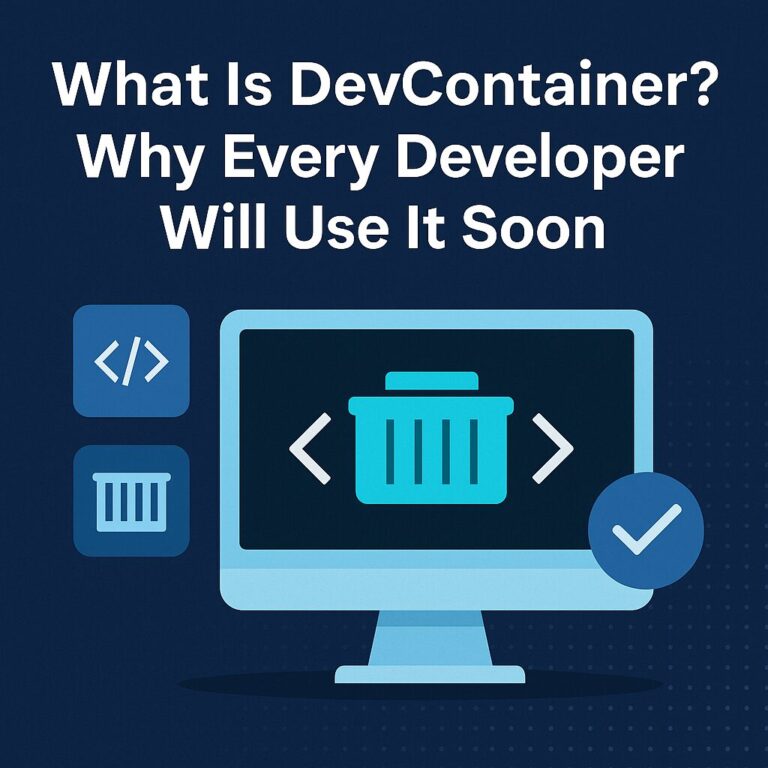
Cross-Platform vs Native Development: The Debate That Never Ends in 2025
Table of Contents
Introduction
The build-once-deploy-anywhere promise of cross-platform tools like Flutter and React Native sounds like a developer’s dream: speed, efficiency, and broader reach. Yet, many teams still swear by building native apps—crafted individually for iOS or Android—for unmatched performance and access to cutting-edge features.
As 2025 unfolds, do cross-platform frameworks finally hold their ground, or do native SDKs still dominate? This guide explores key trade-offs, community insights, benchmarks, and future trends to help teams make better choices, faster.

1. Code Reusability vs Platform-Specific Fidelity
Cross-Platform Advantage—Code Reuse & Speed
Cross-platform frameworks dramatically reduce duplication. With one codebase, teams can deploy to iOS, Android, web, and even desktops. This speeds up release cycles and simplifies long-term maintenance.
For example, on r/EntrepreneurRideAlong, a developer explained why cross-platform is ideal for startups:
“Cross-platform app development speeds up the process by using a single codebase… frees up time for other projects… reduces development and maintenance costs.”
Native Strength—Superior Performance & Platform Fit
Native development provides direct access to OS APIs, smoother animations, and optimized performance—especially critical for high-demand use cases like AR, gaming, or real-time data processing.
2. Performance, UI/UX & Access to Native Features
Cross-Platform Gaps
Even mature platforms may lag behind native when it comes to bleeding-edge hardware features or ultra-smooth UI elements, especially in graphics-heavy apps.
Native’s Edge
Native platforms deliver unrivaled performance and allow developers to adopt the latest features and design patterns as soon as they’re released.
If you want more information with enhanced visuals,then download the pdf below(login required):
3. Developer Experience & Tooling
Flutter’s Productivity Tools
Flutter offers standout features like hot reload and a widget-based architecture, enabling fast iteration and smooth design collaboration.
React Native’s JavaScript Ecosystem
React Native leverages JS and TypeScript, opening doors for web developers to transition quickly and tap into a broader ecosystem.
Native’s Specialty Toolkits
Tools like Xcode and Android Studio offer refined, platform-specific tooling and debugging capabilities—valuable for mission-critical apps.
4. Cost, Timeline & Budget Trade-Offs
Cross-Platform is Cost-Effective for MVPs
According to LinkedIn insights, building a cross-platform MVP in 2025 typically costs $20K–50K and takes 2–4 months—great for startups with tight budgets or deadlines.
Native Costs More, but Might Be Worth It
Developing native apps for both platforms can cost over $100K and take 6–12 months—but pays off for apps relying on performance, security, or hardware integrations.
5. Real Developers Weigh In
On job markets and framework demand (r/swift):
“We’re a 70-person team. Cross-platform apps are in more demand from clients. It seems like a one-size-fits-all solution, especially for bootstrapping startups.”
The reality behind performance myths (r/FlutterDev):
Useful Links
“Performance issues are less and less of an issue. Flutter is already fast enough for most apps… hardware improvements make it acceptable in most cases.”
Cautious realism on cross-platform limitations (r/iOSProgramming):
“Cross-platform tools are good for simple apps. They’re not replacements for native. Designers need to stay realistic about limitations.”
6. Native Development: Pros & Cons
Pros:
- Direct access to device APIs (GPS, biometrics, etc.)
- Flawless performance, especially in complex scenarios
- Strong security, platform optimization, and first-run experience
Cons:
- Duplicated development effort (iOS + Android)
- Higher long-term costs and separate maintenance workflows
7. Cross-Platform: Pros & Cons
Pros:
- One codebase — lower dev overhead and faster launch
- Wide marketplace reach, especially useful for MVPs and internal tools
Cons:
- Potential performance gaps or UI inconsistencies
- Reliance on plugin support and framework maturity
- Larger app sizes and occasional debugging complexity
8. Decision Framework: When to Opt for Each
Choose Cross-Platform if:
- You’re launching an MVP with tight budget or deadline
- Your app relies mostly on UI and basic functionality, not heavy hardware usage
- You value rapid updates and unified codebase maintenance
Choose Native if:
- You require peak performance, advanced OS features, or platform-specific experiences
- The app represents your brand’s core differentiator or requires high security compliance
- You have developers dedicated to each platform
Pro Tip: Many teams opt for hybrid models—build core features natively but wrap non-critical areas in cross-platform code.
9. What’s Ahead in Mobile Dev?
- Emergence of Kotlin Multiplatform (KMM) for better code sharing with native feel
- Declarative UI code generation using AI tools, like the “DeclarUI” model that works on React Native, Flutter, and more
These trends hint at a future where fluid blending of cross-platform and native workflows could become mainstream.

Conclusion
The “Cross-Platform vs Native” debate is far from over—but context is everything. Native development excels when performance, security, or platform experience matters most. Cross-platform shines when speed, budget, and broad reach are top priorities.
A smart approach? Pick the strategy that aligns with your goals, expertise, and timeline—and consider mixing both for maximum leverage.

🚀 Let's Build Something Amazing Together
Hi, I'm Abdul Rehman Khan, founder of Dev Tech Insights & Dark Tech Insights. I specialize in turning ideas into fast, scalable, and modern web solutions. From startups to enterprises, I've helped teams launch products that grow.
- ⚡ Frontend Development (HTML, CSS, JavaScript)
- 📱 MVP Development (from idea to launch)
- 📱 Mobile & Web Apps (React, Next.js, Node.js)
- 📊 Streamlit Dashboards & AI Tools
- 🔍 SEO & Web Performance Optimization
- 🛠️ Custom WordPress & Plugin Development



